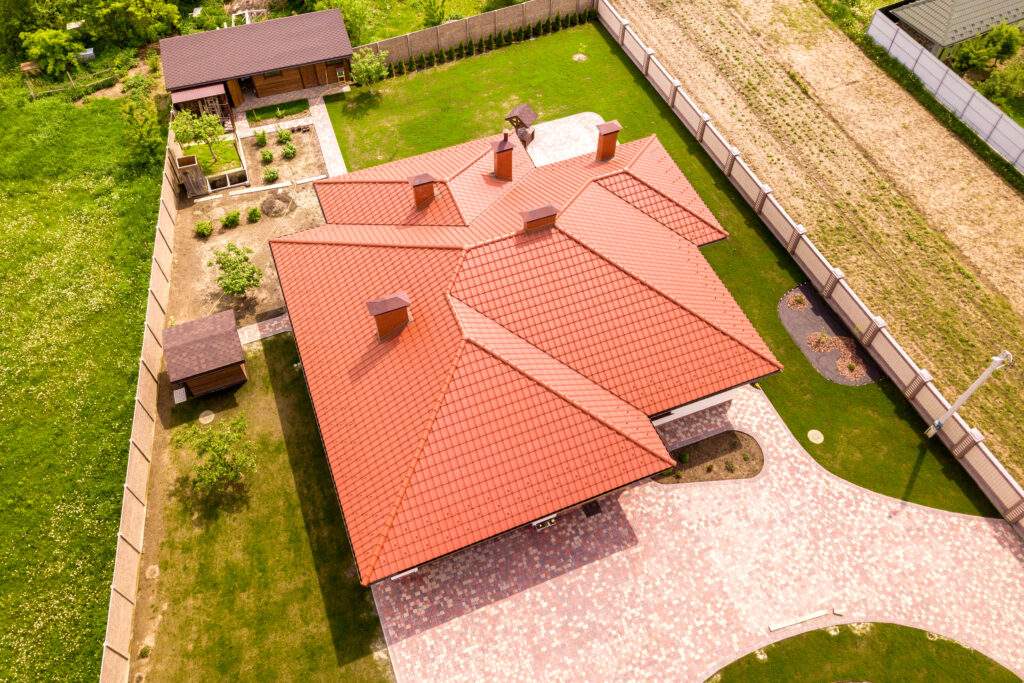

Roofing systems serve as the frontline defense against external elements, ensuring that the interiors of our homes remain dry, warm, and safe. Like any other part of a house, roofs also succumb to wear and tear over time. To extend the lifespan of your roofing system, it’s crucial to identify and address common roofing issues promptly. This article aims to guide homeowners on how to spot these issues and offer solutions to resolve them.
1. Common Roofing Issues
- Leakage and Water Damage: Leaks are the most common roofing issue. Telltale signs include dark stains or streaks on ceilings, damp walls adjacent to fireplaces, or drips. Factors like broken or missing shingles, cracked flashing, or an improperly sealed valley can cause leaks.
- Shingle Damage: Shingles can curl, buckle, crack, or go missing. Prolonged exposure to external elements or poor installation can cause such problems. Damaged shingles can make your home more susceptible to water damage.
- Sagging Roof Deck: If you notice a dip or sag in the structure of your roof, it could be due to prolonged water exposure or structural issues.
- Clogged Gutters: Blocked gutters can cause water to pool and seep into the roof structure. Look out for overflowing gutters, especially after a heavy downpour.
- Flashing Damage: Flashing is the metal piece that seals seams around roof protrusions like chimneys or vents. Damaged or rusted flashing can become a potential leak source.
- Growth of Moss and Algae: Over time, especially in humid areas, moss and algae can grow on the roof surface. This not only affects the aesthetic appeal but can also lead to moisture retention and eventual roof damage.
2. How to Identify Roofing Issues
- Regular Inspection: Conduct periodic checks, especially after storms or heavy rainfall. Use binoculars to inspect from the ground, or if you’re comfortable, use a ladder to get a closer view.
- Attic Inspection: The attic can reveal signs of leakage or insulation problems. On a sunny day, inspect the attic for sunlight peeking through the roof, a sign of holes.
- Check Gutters: Clean gutters regularly and inspect for granule build-up, which can indicate shingle wear.
- Professional Inspection: Consider hiring professionals for an annual or biannual roof inspection. They possess the expertise to spot issues that might be easily overlooked by untrained eyes.
3. Solutions to Common Roofing Problems
- Fixing Leaks: For minor leaks, seal the area using roof cement or patching material. Replace damaged or missing shingles. For significant issues, consider hiring a roofing professional.
- Addressing Shingle Damage: Remove damaged shingles by lifting the edges and extracting the nails. Slide in a new shingle, secure it with nails, and then reseal using roof cement.
- Resolving Sagging Roof Deck: A sagging roof deck often demands professional intervention. It might necessitate replacing larger sections of the roof or even reinforcing the roof’s structural elements.
- Cleaning Clogged Gutters: Clean gutters regularly to remove leaves, twigs, and other debris. Install gutter guards to reduce the frequency of clogs.
- Repairing Flashing: Pry up the damaged flashing and remove nails. Cut a new strip and fit it in place, securing it with roofing nails. Seal the edges using roof cement.
- Treating Moss and Algae Growth: Use a moss remover or long-handled scrubbing brush to clean the roof. Ensure you’re working downwards to avoid lifting shingles. Installing zinc or copper strips at the roof’s peak can also prevent moss growth.
4. Prevention is Better Than Cure
Regular maintenance goes a long way in preventing roofing issues:
- Gutter Maintenance: Clean gutters ensure proper water flow, reducing the chances of leaks and water damage.
- Roof Cleaning: Periodic cleaning can prevent moss, algae, and debris build-up.
- Proper Insulation: Ensure your attic has appropriate insulation and ventilation. This prevents ice dams in winters and keeps your home cooler in summers.
- Tree Trimming: Overhanging branches can scrape the roof surface, dislodging shingles or causing debris accumulation. Regularly trim trees near the roof.
- Quality Installation: If you’re installing a new roof or replacing an old one, ensure that you hire reputable professionals. A well-installed roof can withstand the test of time and external elements.
Conclusion
Roofs, being pivotal in ensuring our homes’ safety and comfort, demand attentive care. Recognizing and addressing common roofing issues can save homeowners significant time, money, and inconvenience in the long run. Regular inspections, timely interventions, and preventative measures are the keys to a long-lasting roofing system.